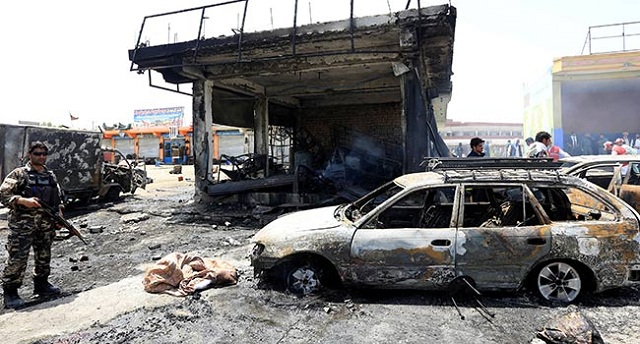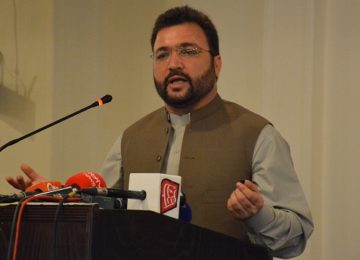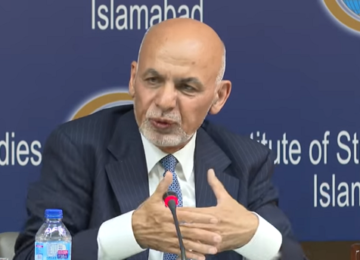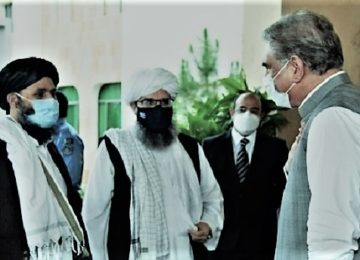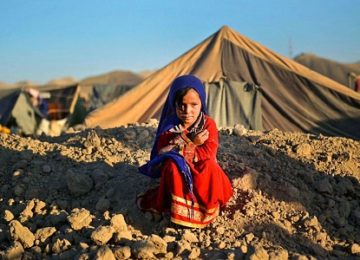UNAMA has released its mid-year assessment of the harm done to civilians in the Afghan conflict. It found that more civilians were killed in the first six months of 2018 than in any year since 2009 when UNAMA started systematic monitoring. This was despite the Eid ul-Fitr ceasefire, which all parties to the conflict apart from ISKP, the local ‘franchise’ of Daesh, honoured. Particularly worrying trends, says AAN co-director Kate Clark, were Nangrahar province becoming almost as bloody as Kabul and an increased targeting of schools.
Every day in the first six months of 2018, an average of nine civilians, including two children, were killed in the conflict in Afghanistan. An average of 19 civilians, including five children, were injured every day.
UNAMA in its mid-year report for 2018 found that these civilians were killed and injured in ground engagements (29% of the total), suicide and complex attacks (28%), by IEDs (17%), in targeted and deliberate killings (9%), in air attacks (7%) and by leftover unexploded munitions (5%). (1)
They were most likely to have been killed or injured by insurgents (67 per cent of the total), although a fifth (20 per cent) were killed and injured by pro-government forces and ten per cent in fighting between the two. (2)
UNAMA attributed 42 per cent of total civilian casualties to the Taleban, 18 per cent to the Islamic State in Khorasan Province (ISKP), 17 per cent to the Afghan National Security Forces (ANSF), two per cent to the international military and one per cent to pro-government armed groups. The remainder were not attributable to any single party.
Civilians in the provinces of Kabul, Nangarhar, Faryab, Helmand and Kandahar were the most likely to be killed or injured in the war.
In total, for the first six months of 2018, there were 5,122 civilian casualties, 1,692 deaths and 3,430 injured.
These figures, painstakingly put together by UNAMA, (3) show that bloodshed so far in 2018 has remained at the same high level as in each of the last four years. Since 2014, the first half of each year has seen around 5000 civilian casualties, of which around 1600 were deaths. (4) There have been only slight fluctuations between the years. In 2018, slightly more civilians were killed than last year (a one per cent increase), while slightly fewer were injured (six per cent), resulting in an overall decrease in casualties of three per cent.
This high level of civilian casualties persisted in 2018 despite the Eid ceasefire when, for three days (15-17 June), the government, Taleban and US military pledged to conduct no offensive operations against each other (see AAN’s analysis of the ceasefire and our collection of Afghans’ thoughts and feelings about it.) There is always a lull in violence over the Eid holidays in Afghanistan, but this year there were, unprecedentedly, almost no incidents.
The two exceptions – and they were brutal – were in Nangrahar province, where the ISKP is relatively strong. It did not join the ceasefire and nor were its forces protected by the other parties’ truce. On the second day of Eid, an ISKP suicide bomber blew himself up in the middle of a crowd of Taleban, Afghan National Security Forces (ANSF) and civilians in Rodat district. The following day, a bomb planted near the governor’s office killed and wounded people waiting for the end of a meeting between officials and visiting Taleban. UNAMA described how these two attacks, which killed 48 civilians and injured 133 others, “crushed the peaceful atmosphere in Nangarhar,” marring what had otherwise been a calm holiday:
The break in fighting led to unprecedented improvements in freedom of movement for ordinary Afghans, some of whom visited family homes in Taliban controlled areas that they had been prevented from reaching for years. It also spared the lives of countless Afghan civilians, who continue to suffer at extreme levels from the armed conflict… Apart from [the ISKP attacks in Nangrahar], UNAMA documented almost no other civilian casualties during the break in fighting. The brief ceasefire offered a glimmer of hope to the civilian population at a time when many may have been unable to imagine respite ahead.
The ‘exceptional’ behaviour of ISKP during Eid underlined what a dangerous foe it is and how, even if other parties to the conflict manage to negotiate an end to the violence, it would likely position itself outside any agreement as a dissident group continuing to fight.
The Eid truce was honoured by Taleban, government and US forces and the government unilaterally began its ceasefire earlier and extended it (18 days in total, 12-29 June). Yet, this was not enough to pull overall figures down for January to June 2018.
Trends in the war: How civilians were killed and injured
The number of civilian casualties caused by suicide and complex attacks increased markedly in the first half of 2017, by 23 per cent, with the number killed increasing by 65 per cent. (5) Bearing in mind that the 2017 casualty figures for this type of attack were already 17% higher in 2016, the upward trend is very clear. ISKP was responsible for half of the deaths and injuries caused by this tactic between January and June this year.
The two places suffering the most from what are usually mass casualty events are Kabul and Nangrahar. In Nangrahar, nearly two thirds of all civilian casualties were caused by IEDs, mainly suicide and complex attacks. (6) Almost half were claimed by ISKP. It was because of this tactic that the overall number of civilian casualties in Nangrahar doubled in the first half of this year compared to the same period in 2017. They are now almost at the levels recorded in Kabul.
Casualties caused by ground engagements fell by 18 per cent in the first half of this year, said UNAMA. Civilian casualties attributed to both sides fell, by anti-government elements, mainly the Taleban, by 23%, and by pro-government forces, mainly the ANSF, by 21 per cent. UNAMA acknowledged that actions taken by the government have reduced the civilian casualties resulting from its operations, particularly during ground fighting. (7) Deaths and injuries from pressure plate IEDs, which are used by insurgents, mainly the Taleban, also fell, by 43 per cent. The pressure-plate IEDs is considered illegal under the Geneva Conventions because it is an inherently indiscriminate weapon, killing whoever steps on it, whether combatant or civilian. “UNAMA,” the report says, “has engaged in extensive advocacy efforts with parties to the conflict on civilian casualties caused by pressure-plate IEDs and ground engagements over the past several years.”
There was also, said UNAMA a “significant decrease from targeted and deliberate killings,” during the first half of 2018 compared with the same period in 2017.
The trend towards more civilians being killed and injured in air strikes continued in 2018, with a 52 per cent increase in January to June this year compared to the first half of 2017 (353 civilian casualties; 149 deaths and 204 injured). That was itself a 43 per cent increase on the 2016 numbers. UNAMA’s ability to attribute civilian casualties caused by air strikes has improved markedly. UNAMA attributed 52% to the Afghan Air Force and 45 per cent to international military forces, with only three per cent unattributed to either. The unattributed figure in 2017 was 33 per cent. Hopefully, this greater accuracy will help with its advocacy work on mitigating casualties.
Trends in targeting
Insurgents have been targeting election officials and sites since voter registration began on 14 April. There have been 341 civilian casualties (117 deaths and 224 injured). Most of these (250) came from two attacks in Kabul (22 April) and Khost (6 May).
UNAMA has recorded attacks on centres distributing tazkiras (IDs) and registering voters, attacks on election workers and police guards and through insurgents’ use of IEDs, suicide attacks and targeted killings. UNAMA has documented threats, abductions and killings of candidates and supporters. This election-related violence has also hurt children’s education because voter registration is often carried out in schools and these have then become the focus of attack. UNAMA recorded 39 attacks on schools used as voter registration centres. The result has been children killed and injured, schools closed and attendance reduced.
UNAMA also noted an “emerging trend” of insurgents attacking and threatening schools as a response to operations by pro-government forces. In Nangrahar, ISKP targeted education facilities in retaliation for air strikes; UNAMA recorded 13 incidents in June, including the targeting of schools and education officials and a complex attack on the provincial education offices in Jalalabad which killed six civilians and injured 17 others. In March in Charkh district in Logar province, 29 schools were also forcibly closed by the Taleban after the house of one of their commanders was targeted by pro-government forces.
ISKP has continued to target Shia Muslims, most of whom are ethnic Hazara. 115 Shia civilians were killed in the first half of this year and 251 injured (366 casualties in total), nearly all from suicide and complex attacks claimed by ISKP.
The proportion of civilian casualties caused by insurgents deliberately targeting them has also gone up – by 28 per cent in the first half of 2018, compared to the same period in 2017. Indeed, more than half of all civilian casualties from insurgents came in attacks claimed by the Taleban or ISKP. For each group, that increase was four-fold.
Finally, there has also been an increase in civilians being killed and injured in search operations by pro-government forces, including partnered operations between the ANSF and international military forces (UNAMA does not specify which forces, but both CIA paramilitaries and US special forces are possible). In particular, UNAMA says, National Directorate of Security (NDS) special forces and pro-government militias such as the Khost Protection Force have “caused increased civilian casualties and other abuses.” UNAMA warned about the behaviour of these forces and their international partners and their impunity in 2017 and 2016. Human Rights Watch in February 2018 also reported summary executions by NDS forces. In UNAMA’s latest report, it says:
These forces are of particular concern as many of them appear to operate outside of the Afghan National Security Forces’ chain of command, resulting in a lack of clear oversight and accountability given the absence of clearly defined jurisdiction for the investigation of any allegations against them.
Conclusion
The only solace UNAMA’s report gives is those downward figures on civilian casualties caused by ground engagements and pressure plate IEDs. Yet, it is important to note that in these cases, advocacy and political pressure appears to have succeeded in encouraging the parties to the conflict to put in place some measures to spare civilians. Set against the huge total number of civilian casualties and continuing bloodshed, the increase in civilian casualties civilians from suicide and complex attacks and by air strikes, this may seem a small thing. However, any reduction in the harm done to civilians is welcome. That UNAMA has also apparently become better able to differentiate who launches airstrikes resulting in civilian deaths and injuries – the American airforce or the Afghan airforce – is also a good sign. It provides an opportunity for greater and more focussed advocacy and support in reducing losses to civilians.
Overall though, the picture is bleak. The war continues to take the lives of Afghan civilians in vast numbers. Even the Eid ceasefire, which gave a tantalising vision of a country at peace, was ended by the Taleban with the launch of more than two dozen offensive operations. The level of violence in the country all too quickly returned to ‘normal’. The Eid truce may have sown the seeds of eventual peace through the opportunity it gave for Afghan combatants and civilians to travel to enemy areas and fraternise, and for local leaders to meet. For now, though, Afghanistan’s peaceful Eid already seems lost in the post-Eid bloodshed. Indeed, it would seem foolish after reading this report to hope for any major reduction in civilian casualties by the end of the year when UNAMA collates its annual report.
(1) UNAMA’s breakdown in how civilians were killed and injured was as follows:
- Ground engagements (29 per cent of the total): 1494 civilian casualties; 360 deaths, 1194 injuries
- Suicide and complex attacks (28 per cent): 1413 civilian casualties; 427 deaths, 986 injuries
- IEDs (17 per cent): 877 civilian casualties; 232 deaths, 645 injuries
- Targeted and deliberate killings (nine per cent): 463 civilian casualties; 301 deaths, 162 injuries
- Aerial operations (seven per cent): 353 civilian casualties; 149 deaths, 204 injuries
- Explosive remnants of war (five per cent): 239 civilian casualties; 149 deaths, 204 injuries
(2) UNAMA gave these figures for those who caused the civilian casualties:
- Anti-Government Elements (67 per cent of the total): responsible for 3413 civilian casualties; 1127 deaths, 2286 injuries
- Pro-Government Elements (20 per cent): 402 civilian casualties; 427 deaths, 645 injuries
- Jointly attributable (10 per cent): 503 civilian casualties; 123 deaths, 380 injuries
(3) For verification of each incident allegedly involving a civilian casualty, UNAMA says that it
…requires at least three different and independent types of sources, i.e. victim, witness, medical practitioner, local authorities, confirmation by party to the conflict, community leader or other sources. Wherever possible, information is obtained from the primary accounts of victims and/or witnesses of the incident and on-site investigations. This form of investigation is not always possible, primarily due to security-related constraints affecting access. In such instances, UNAMA relies on a range of techniques to gain information through reliable networks using as wide a range of sources and information as possible, all of which are evaluated for credibility and/or reliability.
For more detail, see the methodology section in UNAMA’s last annual report.
(4) Figures for the first six months of the years 2014-2018:
2014: 4,895 civilian casualties of which 1,686 were deaths
2015: 4,982 civilian casualties of which 1,615 were deaths
2016: 5,275 civilian casualties of which 1,644 were deaths
2017: 5,272 civilian casualties of which 1,672 were deaths
2018: 5,122 civilian casualties of which 1,692 were deaths
The previous years saw: 2,492 civilian casualties (2009), 3,271 (2010), 3,916 (2011), 3,138 (2012) and 3,138 (2013)
(5) In the first half of 2017, suicide and complex attacks caused 1,151 civilian casualties; 259 deaths and 892 injuries.
(For detail, see UNAMA’s 2017 mid-year report).
In the first six months of 2018, suicide and complex attacks caused 1413 civilian casualties; 427 deaths and 986 injuries.
(6) Since 2017, UNAMA changed its categories and started counting complex and suicide attacks as a subset of IEDs attacks.
(7) The numbers do not appear to add up, ie the reduction from both parties is less than the overall reduction. However, they do not account for those casualties which UNAMA could attribute to either side.
By Special Arrangement with AAN. Original link.
Disclaimer: Views expressed on this blog are not necessarily endorsed or supported by the Center for Research and Security Studies, Islamabad.



